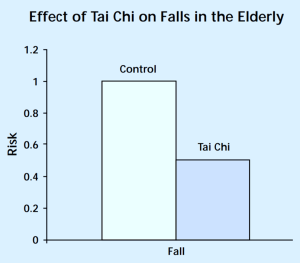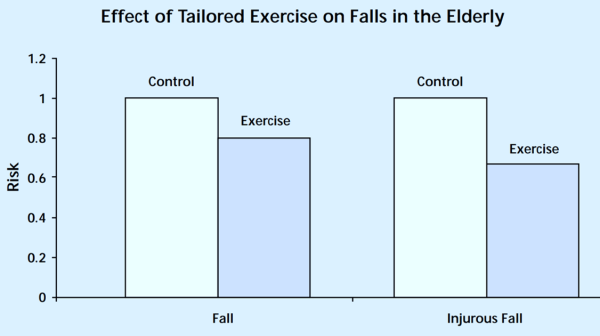Adequate physical activity, together with adequate nutrition, helps young people achieve optimal bone growth and development, and thus their full genetic potential for peak bone mass [1]Karlsson, M.K., A. Nordqvist, and C. Karlsson, Physical activity increases bone mass during growth. Food Nutr Res, 2008. 52.
. This is an important first step in osteoporosis prevention in later life.
Although studies conclude that physical activity is important for growing bone, the characteristics of physical activity that impact bone (e.g. frequency, mode, intensity, etc.) are not fully determined.
A major US study looked at trials where exercise was used as an intervention to increase bone mass outcomes in youth and found that 84 % reported statistically significant differences between exercise and control groups, ranging from approximately 1% to 6% over 6 months for total body, femoral neck, and spine. Further, the study found that 89% of 19 prospective longitudinal reports indicated that the most active youth had significantly more bone mass when compared to less active peers [2]Weaver, C.M., et al., The National Osteoporosis Foundation's position statement on peak bone mass development and lifestyle factors: a systematic review and implementation recommendations. Osteoporos Int, 2016. 27(4): p. 1281-1386.
.
Research has shown physically active young girls gain about 40% more bone mass than the least active girls of the same age [3]. Other studies have shown that boys who did the most vigorous daily activity had 9% more bone area and 12% more bone strength than less active boys [4]Janz, K.F., et al., Everyday activity predicts bone geometry in children: the iowa bone development study. Med Sci Sports Exerc, 2004. 36(7): p. 1124-31.
.
- High-intensity exercise of short duration appears to result in the greatest bone density increase in the growing skeleton.
- It is recommended children engage in physical activity for at least 40 minutes a day. This exercise should include sports with a weight-bearing element (cycling and swimming are non-weight-bearing) or activities such as dancing, skipping, running or walking.
It is important for adults to engage in regular exercise in order to prevent bone loss and maintain muscle strength. The amount and type of exercise will vary depending on your age and bone health. In post-menopausal women and in men, mixed loading exercises seem to be effective in reducing bone loss [5]Kelley, G.A., K.S. Kelley, and W.M. Kohrt, Effects of ground and joint reaction force exercise on lumbar spine and femoral neck bone mineral density in postmenopausal women: a meta-analysis of randomized controlled trials. BMC Musculoskelet Disord, 2012. 13: p. 177.
[6]Kelley, G.A., K.S. Kelley, and W.M. Kohrt, Exercise and bone mineral density in men: a meta-analysis of randomized controlled trials. Bone, 2013. 53(1): p. 103-11.
[7]Martyn-St James, M. and S. Carroll, Meta-analysis of walking for preservation of bone mineral density in postmenopausal women. Bone, 2008. 43(3): p. 521-31.
[8]Martyn-St James, M. and S. Carroll, A meta-analysis of impact exercise on postmenopausal bone loss: the case for mixed loading exercise programmes. Br J Sports Med, 2009. 43(12): p. 898-908.
.
Studies have shown people with a sedentary lifestyle are more likely to have a hip fracture than those who are more active. For example, women who sit for more than nine hours a day are 50% more likely to have a hip fracture than those who sit for less than six hours a day [9]Pfeifer, M., et al., Musculoskeletal rehabilitation in osteoporosis: a review. J Bone Miner Res, 2004. 19(8): p. 1208-14.
. It has also been suggested that exercising prior to age 40 is associated with a lower risk of falling in seniors [10]Bischoff, H.A., et al., Self-reported exercise before age 40: influence on quantitative skeletal ultrasound and fall risk in the elderly. Arch Phys Med Rehabil, 2001. 82(6): p. 801-6.
.
Exercise should be individually tailored to the needs and capabilities of each person. Overall, most individuals should aim to exercise for 30 to 40 minutes three to four times each week, with some weight-bearing and resistance exercises in the program. See effective physical activity programmes, posture and balance, as well as further reading and resources.
Exercise builds muscle tone and improves balance, thereby preventing falls, which are a major cause of osteoporosis fractures. However, particularly for older individuals, it is important that the exercises chosen or prescribed be suited to the age and health condition of the individual. We recommend consulting a medical professional about what is right for the patient.
In older adults, aerobic and resistance training are both recommended, and weight-bearing exercise helps maintain bone density. Exercise is especially important for older women, who have a higher rate of bone tissue loss after menopause.
Recommendations from the American Heart Association and the American College of Sports Medicine for older adults are to complete 30–60 min of moderate intensity aerobic exercise per day (150–300 min/week) or 20–30 min of vigorous intensity exercise per day (75–150 min/week) [14]Province, M.A., et al., The effects of exercise on falls in elderly patients. A preplanned meta-analysis of the FICSIT Trials. Frailty and Injuries: Cooperative Studies of Intervention Techniques. JAMA, 1995. 273(17): p. 1341-7.
. For healthy seniors, reasonable training would be 10–15 min exercise sessions with eight repetitions per muscle group.
In the elderly, resistance exercises, by stimulating muscle protein synthesis, seem to be advantageous in rebuilding muscle mass, strength and performance [11]Girgis, C.M., Integrated therapies for osteoporosis and sarcopenia: from signaling pathways to clinical trials. Calcif Tissue Int, 2015. 96(3): p. 243-55.
. Additionally, ingesting protein-rich food after physical activities enhances de novo muscle protein synthesis [12]Cermak, N.M., et al., Protein supplementation augments the adaptive response of skeletal muscle to resistance-type exercise training: a meta-analysis. Am J Clin Nutr, 2012. 96(6): p. 1454-64.
[13]Finger, D., et al., Effects of protein supplementation in older adults undergoing resistance training: a systematic review and meta-analysis. Sports Med, 2015. 45(2): p. 245-55
.
Many studies demonstrate that simple weight-bearing exercise programmes improve gait speed, muscle strength, and balance in older people, which translates into a 25-50 % fall reduction [14]Province, M.A., et al., The effects of exercise on falls in elderly patients. A preplanned meta-analysis of the FICSIT Trials. Frailty and Injuries: Cooperative Studies of Intervention Techniques. JAMA, 1995. 273(17): p. 1341-7.
[15]Trombetti, A., et al., Effect of music-based multitask training on gait, balance, and fall risk in elderly people: a randomized controlled trial. Arch Intern Med, 2011. 171(6): p. 525-33.
[16]Wolf, S.L., et al., Reducing frailty and falls in older persons: an investigation of Tai Chi and computerized balance training. Atlanta FICSIT Group. Frailty and Injuries: Cooperative Studies of Intervention Techniques. J Am Geriatr Soc, 1996. 44(5): p. 489-97.
. As falls are the primary risk factor for fractures, the rationale is that these interventions should also protect against fractures, although this needs confirmation in large clinical studies. The recommendation is that exercise programmes for fall and fracture prevention should include balance training and lower and upper extremity strength training. Strengthening the upper extremities is also important for falls prevention.
Notably, these exercise programmes are effective in seniors living in the community and those living in nursing care. Further, recent studies suggest that instructed but unsupervised exercise programmes are effective and demonstrate a significant reduction of falls, both in the elderly living in the community [17]Campbell, A.J., et al., Randomised controlled trial of a general practice programme of home based exercise to prevent falls in elderly women. BMJ, 1997. 315(7115): p. 1065-9.
and those with a hip fracture [18]Bischoff-Ferrari, H.A., et al., Effect of high-dosage cholecalciferol and extended physiotherapy on complications after hip fracture: a randomized controlled trial. Arch Intern Med, 2010. 170(9): p. 813-20.
.
Tai Chi has been successful in reducing falls among healthy older individuals, and physically inactive community-dwelling older individuals, while frail older individuals and fallers may not benefit as much. Programmes that support cognitive function within an exercise programme may also be of great value for fall prevention. Earlier studies suggested that fall risk is increased in seniors unable to walk while talking (stop walking when talking – reduced ability to perform two tasks simultaneously). This concept was tested in a music-based multitask exercise programme, which improved gait and balance and reduced fall risk in community-dwelling elderly [15]Trombetti, A., et al., Effect of music-based multitask training on gait, balance, and fall risk in elderly people: a randomized controlled trial. Arch Intern Med, 2011. 171(6): p. 525-33.
.
Patients who perform Tai Chi twice daily have an impressive further falls risk reduction of almost 50% [16]Wolf, S.L., et al., Reducing frailty and falls in older persons: an investigation of Tai Chi and computerized balance training. Atlanta FICSIT Group. Frailty and Injuries: Cooperative Studies of Intervention Techniques. J Am Geriatr Soc, 1996. 44(5): p. 489-97.
.
Overall, long-term physical activity, particularly moderate intensity, resistance exercises, multicomponent training with balance exercises (e.g. tai-chi), performed 2 to 3 times per week, appears to be a safe and effective intervention for reducing the risk of falls and fall-related injury in older adults [19]Cameron, I.D., et al., Interventions for preventing falls in older people in care facilities and hospitals. Cochrane Database Syst Rev, 2012. 12: p. CD005465.
[20]El-Khoury, F., et al., Effectiveness of two year balance training programme on prevention of fall induced injuries in at risk women aged 75-85 living in community: Ossebo randomised controlled trial. BMJ, 2015. 351: p. h3830.
[21]Gillespie, L.D., et al., Interventions for preventing falls in older people living in the community. Cochrane Database Syst Rev, 2012(9): p. CD007146.
[22]Sakamoto, K., et al., Why not use your own body weight to prevent falls? A randomized, controlled trial of balance therapy to prevent falls and fractures for elderly people who can stand on one leg for </=15 s. J Orthop Sci, 2013. 18(1): p. 110-20.
[23]de Souto Barreto, P., et al., Association of Long-term Exercise Training With Risk of Falls, Fractures, Hospitalizations, and Mortality in Older Adults: A Systematic Review and Meta-analysis. JAMA Intern Med, 2018.
.

